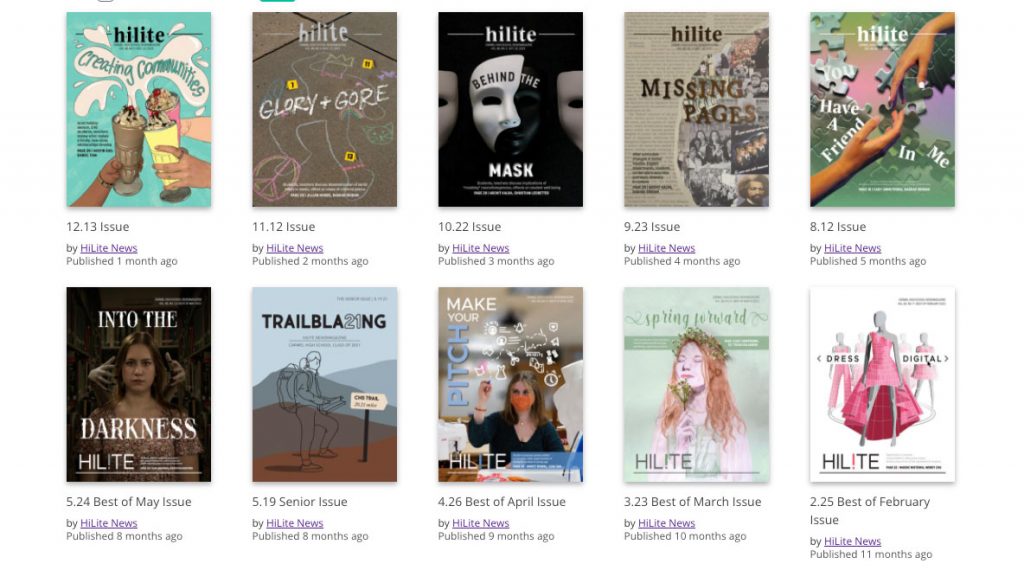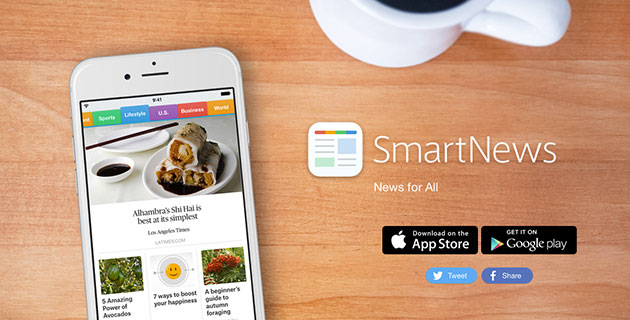We’ll be online-only next year, and that’s OK

The news arrived abruptly at the end of the 2020-21 school year: Starting in 2022-23, our school district was cutting costs and would no longer pay to print copies of the school newsmagazine.
To be fair, I’ve eventually come to terms with the school district’s decision. I understand printing costs are high, and they continue to get higher. And ours was not the only budget cut. However, to put it mildly, I was taken aback by this news. The HiLite has been in service since 1935 and during that nearly 90-year span the organization has experienced much success. When I became the full-time adviser in 2002-03, I inherited a state- and national-award-winning program that didn’t worry about print costs. Students at Carmel High School each paid a fee at the beginning of the year that included, among other things, a subscription to the HiLite. When paper day arrived, we simply made sure we had enough copies for our burgeoning student population (3,500 back in 1995 and more than 5,000 today), and my students happily delivered said papers throughout the school. My staff and I focused on journalism, and the school district took care of the expenses.
But the world changes, and we must change with it. I’ll admit, as a veteran (dare I say, old?) journalism adviser, it’s taken me some time to get my head around that fact. There was comfort in the consistency of having a print publication, both for me and for my students.
But it’s not like we haven’t faced change before.
Changing with the times
When I arrived at Carmel High School in 1995, the HiLite was a traditional, bi-weekly, broadsheet publication. In 1996, we joined the World Wide Web and launched hilite.org. (Fun fact: In 1996 there were fewer than 260,000 websites in the world; today there are more than 1.8 billion.) In 2009, we switched to a 32-page tabloid-style, full-color monthly publication to more accurately reflect our identity as a newsmagazine rather than a newspaper. In print, we focused on more timeless, angle-based and issue-based stories while more timely content got posted online. Then in 2014 we changed again to a 56-page “mini-tab” design (what many would consider a “true” magazine size).
Then COVID hit and we had to make some more adjustments.
Not to be deterred, my news staffs, both at the end of the 2019-20 school year and throughout 2020-21, made valiant efforts to keep the publication going. Since we couldn’t distribute physical print copies (we had both virtual and “hybrid” learning situations), my students continued to create “print” publications by turning them into PDFs and posting them on issuu.com. They also continued to post meaningful and timely content to our website and to social media. They did an admirable job, earning print and online NSPA Pacemakers for both of those years.
It was at the end of last year, though, when we found out about the district’s cost-cutting measures. To give us some time to adjust, the school has continued to pay for most (not all) of this year’s publications at a limited press run (1,500 copies instead of our usual 5,000).
How do we pay for this?
Our first gut reaction was to figure out a way to continue to print on our own. But those expenses are prohibitive. A typical press run costs us about $1,800. Multiply that by 10 (the number of issues we produce in a year) and add to it costs for our quarterly, theme-based Acumen magazine plus our annual senior issue, and our expenses tally well over $22,000. Cutting our press run down doesn’t help much either as per-issue costs rise precipitously the fewer units you print. No amount of bake sales and car washes was going to offset those costs, and, to be fair, I signed up to be a journalism teacher, not a chaperone at a Saturday rummage sale. We do sell ads, but that money typically goes to offset expenses for new equipment, contest entries, critiques, memberships and convention costs.
We were stymied, and my students were getting frustrated. It wasn’t until mid-October that I had my “aha” moment. I watched a small group of juniors (next year’s senior leadership) working together at a white board brainstorming ideas about how to raise money. They weren’t having much success as very few of the ideas were realistic or sustainable (“finding a wealthy benefactor” was on the list). And that’s when it hit me: My students were spending most of their time figuring out how to fundraise instead of doing journalism, but was that the best way to expend our time and resources? I looked again at my students’ list of fundraising ideas (“speak at a school board meeting and demand they continue to pay” also made an appearance), and I wondered why. Why continue to beat our heads against the wall for a product that, ultimately, our readers may not want in the first place, at least in that format?
After all, if the last year and a half taught us anything, it’s that we could continue to do great journalism despite not having a physical print publication. Our website analytics showed significant improvement in all the metrics—page views, new users, bounce rate, session duration, etc.—and we gained tons of new followers on social media. Our readers kept finding our content, so who was driving this “need” for print?
Was it our readers, or was it…just us?
A methodical approach
We needed some data before we made any rash decisions, so a few days after the whiteboard incident I used our class time to have students participate in small-group brainstorming sessions. Most notably, I had them discuss the pros and cons of both print and web. The individual groups filled out little Post-Its with their ideas and then consolidated their responses with the other groups’ ideas to larger pieces of butcher paper at the front of the room. Then I took all of those responses and consolidated them again to a Google spreadsheet. (The full results are HERE.)
What I found was eye-opening and a bit surprising. First, the pros for online publication far outnumbered the pros for print. Additionally, included in the online pros were substantive reasons like more flexible schedules, the ability to deliver stories in a more timely manner and being more environmentally friendly, while the pros for print seemed less important. That list included things like being fulfilling for my staff members (the thrill of seeing their name in print) and keeping their “streak” of print awards going. And while I don’t mean to dismiss those latter items, they’re far more about us and far less about our audience.
Cons for print, on the other hand, mentioned the high costs, both monetary and environmental, in addition to the stricter, less flexible deadline schedule, which added more stress to staff members’ plates. Cons for the web, on the other hand, included that it was harder for readers to access and that our online presence was not as well known, but we agreed those problems were not insurmountable; rather, they were simply hurdles we needed to figure out how to cross, and without the additional burden of creating a print publication we’d have the time and resources to work on those issues.
Moving into the future
While our school district forced our hand, those survey results made the decision clear; it was time to move away from print and dive headfirst into a digital-only model. Frankly, it was probably a choice we should have made a while ago. According to a 2016 survey from the Pew Research Center, while young people are more likely to prefer reading news than their elders (yay!), most of that reading among younger adults is through digital text rather than print. The survey also said about eight-in-10 (81%) of 18- to 29-year-olds who prefer to read their news also prefer to get their news online; just 10% choose a print newspaper.
Look, I’ll definitely miss our print publications. I’ve spent a long time in the HiLite classroom and that’s added up to a lot of late nights and a lot of ink on my fingers and clothes. I’ll miss the smell of the stacks of freshly printed publications in our hallway and the buzz of my students as they gather those stacks to deliver them throughout the school. It will be bittersweet to see that part of our organization disappear. But in the end, I’ve made peace with our decision to move completely online next year. For my students, it turns out, the change has been even less of an ordeal. In fact, now that the burden of figuring out how to pay for our print issues has been lifted, many of them seem excited and eager to dive into this new challenge. Moving completely online will be an adjustment, to be sure, but I think we’re ready. To start, we already know we have some areas to shore up. Our production schedule, which has been print-centric for decades, will need to change to reflect constantly rolling online deadlines. The way we create designs will change, too, as we no longer will be constrained to specific page sizes and we will be able to explore and incorporate more multimedia tools. We’ll also be adding a marketing and branding team to help our readers know where we are and how to find the content we create.
But some things won’t change. We’ll still focus on journalism and all the transferable life skills that come along with that, and that makes an old veteran like me happy. After all, journalism is what I know and what I’ve been trained to do. Those journalistic basics—the elements of news, information-gathering skills like interviewing and research and observation, how to develop solid angles—will remain the same. It’s only the tools we use that will change and I’m OK with that. (Full disclosure, those tools have changed so much in my 27-year career that I barely know how to use many of them. But my students do, and as long as they apply their knowledge of journalism to those tools then it’s all good.)
Journalism has experienced transition for some time now, and our programs are not immune to those changes. It’s up to us to decide whether we stay rooted in the past or continue to adapt to our audience’s ever-changing needs. I’m excited to see what adventures next year will bring.





We won’t be limited to particular page widths, so we can experiment with and use more multimedia technologies, which will alter the way we produce designs as well. Visit pavers wellington nz for more help.